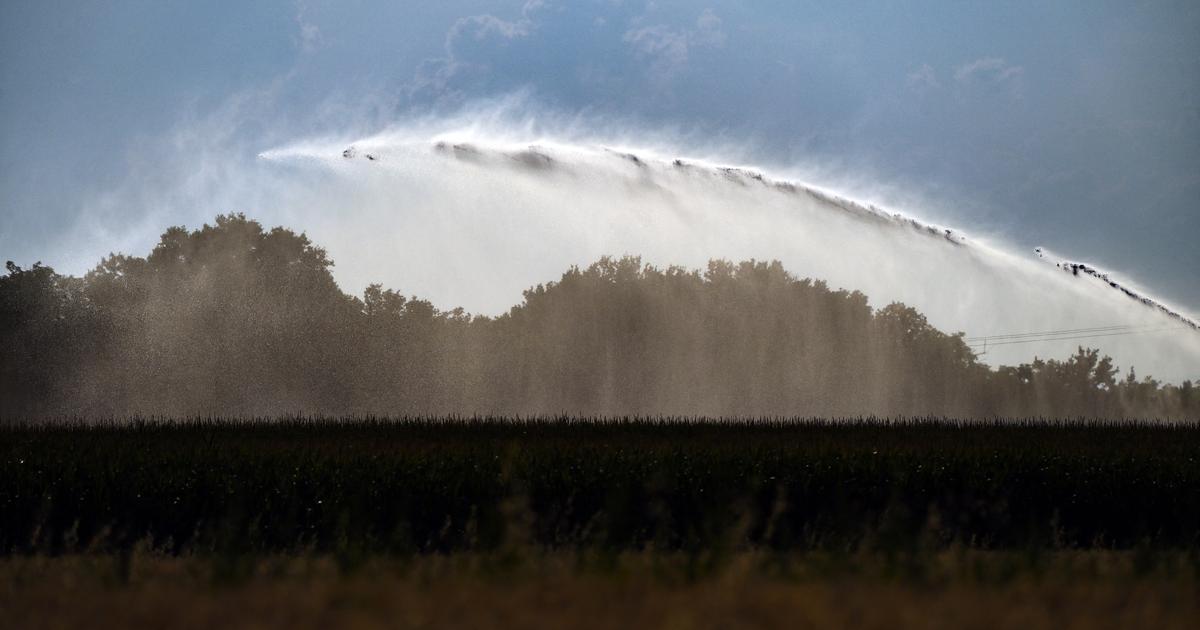Over the course of a weekend, two gatherings organized in Deux-Sèvres and Charente-Maritime gave the impression, all things considered, of the birth of a new Sivens (Tarn).
If this dam project for the irrigation of agricultural land marked the collective memory, it is in particular due to the death of Rémi Fraisse, in 2014, during clashes with the police.
Seven years later, there are demonstrators opposed to a water retention project, clashes that erupt with the gendarmes and farmers who must again face criticism and degradation of their facilities.
Saturday, three gendarmes were injured, according to the prefecture of Deux-Sèvres.
Several members of the government, Julien Denormandie, Gérald Darmanin or Bérangère Abba, condemned this “violence and degradation”.
Could a water war between defenders of traditional agriculture and sustainable pro-agriculture take shape?
What happened ?
Nearly 2,000 opponents of "mega basins" demonstrated on Saturday against a project to provide water reserves for irrigation in Mauzé-sur-le-Mignon (Deux-Sèvres). The demonstrators, led by the Bassines Non Merci collective, the Peasant Confederation and the Earth Uprisings, intended to denounce “the grabbing and privatization of water” for the benefit of a minority of farmers. They are calling for the “immediate stop” of the work at Mauzé-sur-le-Mignon, where the first of the sixteen “basins” planned for the Sèvre Niortaise basin, mostly in Deux-Sèvres, is being dug.
The demonstration was punctuated by clashes, the prefecture condemning "violent acts" by demonstrators "on the police, in order to bypass" the roadblocks put in place, causing "three wounded among the gendarmes", according to a press release. .
Just 6 km away, in Cramchaban (Charente-Maritime), a water reservoir already built and filled has been degraded.
A pump was disconnected and the tarpaulins covering the basin removed, leaving about 200,000 m³ of water to vanish.
The local Federations of Farmers Unions (FDSEA) announced to France Bleu their intention to file a complaint on Monday.
What should these water reservoirs be used for?
These reserves, which take the form of craters covered with a plasticized membrane, must be supplied by rivers, rains and groundwater in winter, and be used in the summer by farmers who irrigate during periods of drought. Faced with repeated water shortages, many projects, a hundred in the former Poitou-Charentes region, and a thousand nationally, are building their nests in France.
In this sector located between two departments, about fifteen projects, the cost of which is estimated at 60 million euros, could see the light of day.
“At this stage, legally, nothing stands in the way of making seven reservations.
It is a useful project, measured and concerted on the scale of the Marais Poitevin ”, explained in September Emmanuel Aubry, the prefect of Deux-Sèvres.
These projects, which some call “basins”, are often carried by groups of farmers, like methanizers, monitored and financially supported by the State.
Read alsoFish, drinking water ... how drought threatens our environment
In July 2019, when he announced significant aid to fight against drought, the former Minister of Agriculture, Didier Guillaume, responded to the President of Farmers (FNSEA) who pointed out the fact that only 2, 7% of the rainwater that fell was stored in France in water reservoirs, against 21% in Spain.
He explained "that an instruction [had just] been launched and authorized [to] the construction of collective water reservoirs, (…) piloted by the prefects, within the framework of concerted territorial projects".
“At the same time, we will of course have to complete a reflection on the possible reorientation towards crops that consume less water,” he promised.
Why do these projects divide?
Because this is the heart of the dissension between irrigating farmers. The main agricultural union, the FNSEA, and the third union in the profession, the peasant confederation, which defends more reasoned agriculture, are opposed. Not to mention that in this area of the Poitevin marsh, tensions between supporters and detractors of water reservoirs have existed for years.
According to opponents, the pump that was "borrowed" was used to recover "water from the water table".
"This basin is not a retention of rainwater, otherwise it would be much less problematic", considers Léna Lazare, of the collective Earth Uprisings.
On the side of the defenders, Joël Limouzin, president of the Chamber of Agriculture of Vendée, present on the spot Saturday, ensures that all these "substitution reserves are legal and the withdrawals authorized by the State take place only in winter, when the tablecloths are full and overflowing ”.
Read also In Lot-et-Garonne, the pending future of the Caussade dam
Farmers would thus pump at “shallower than in the past” thresholds. If he therefore recognizes that certain reserves draw their water from the aquifers, he wants to put it into perspective: "240,000 m³ is the equivalent of one hour of flow from the local river, the Sèvre Niortaise". According to the farmers of Vendée, “where these retentions work very well”, it is explained that “surface and groundwater are connected”. Pumping from the groundwater would therefore not affect the watercourses.
Behind this fight is also a fight against a type of agriculture.
"If the irrigation restrictions continue in spring and summer, those who do not have these basins suffer the consequences," said Nicolas Girod, national spokesperson for the Confédération paysanne, according to whom "we can see today 'hui a hold-up on water for the benefit of a minority of farmers and a single agricultural model ”.









